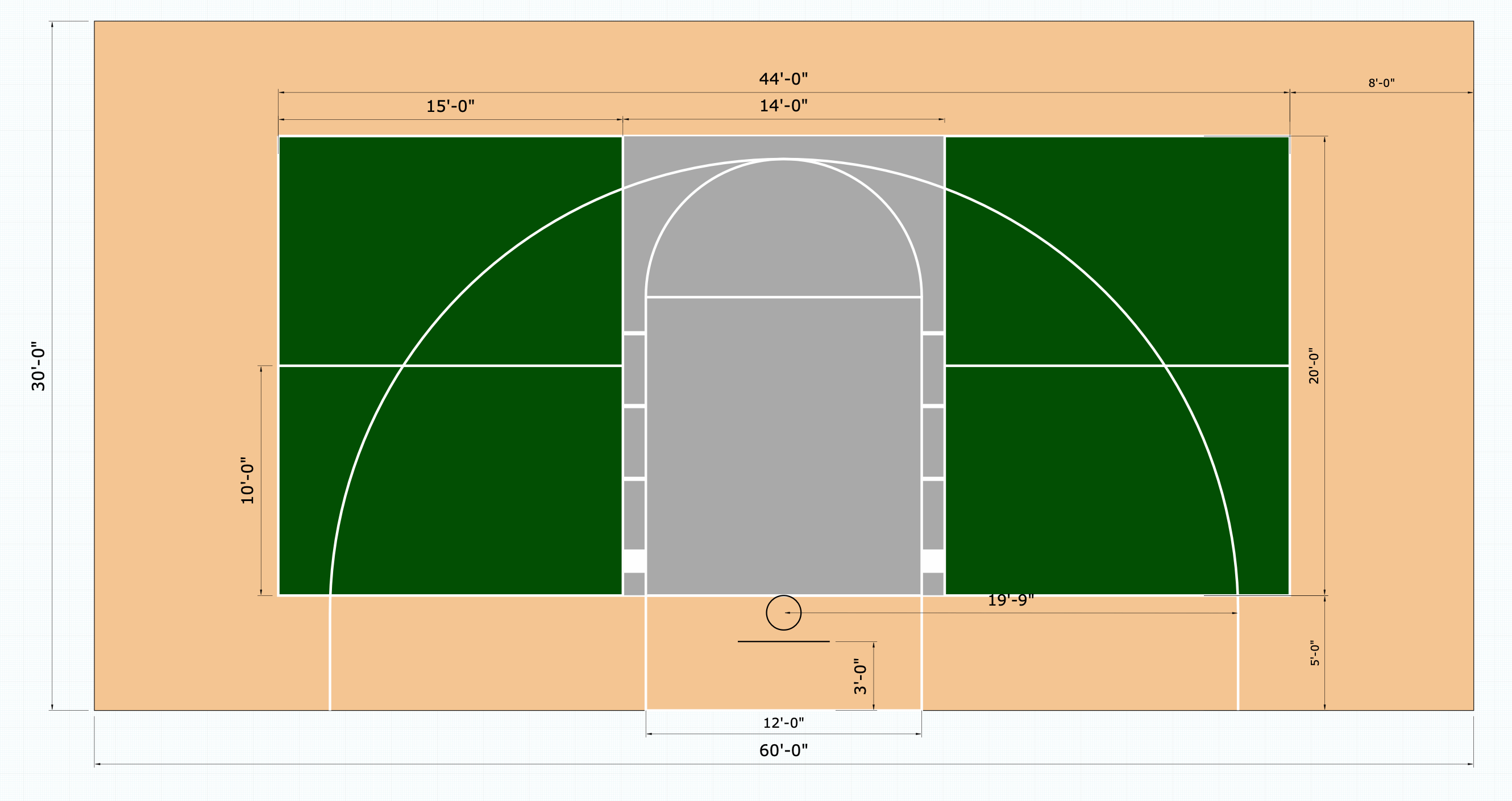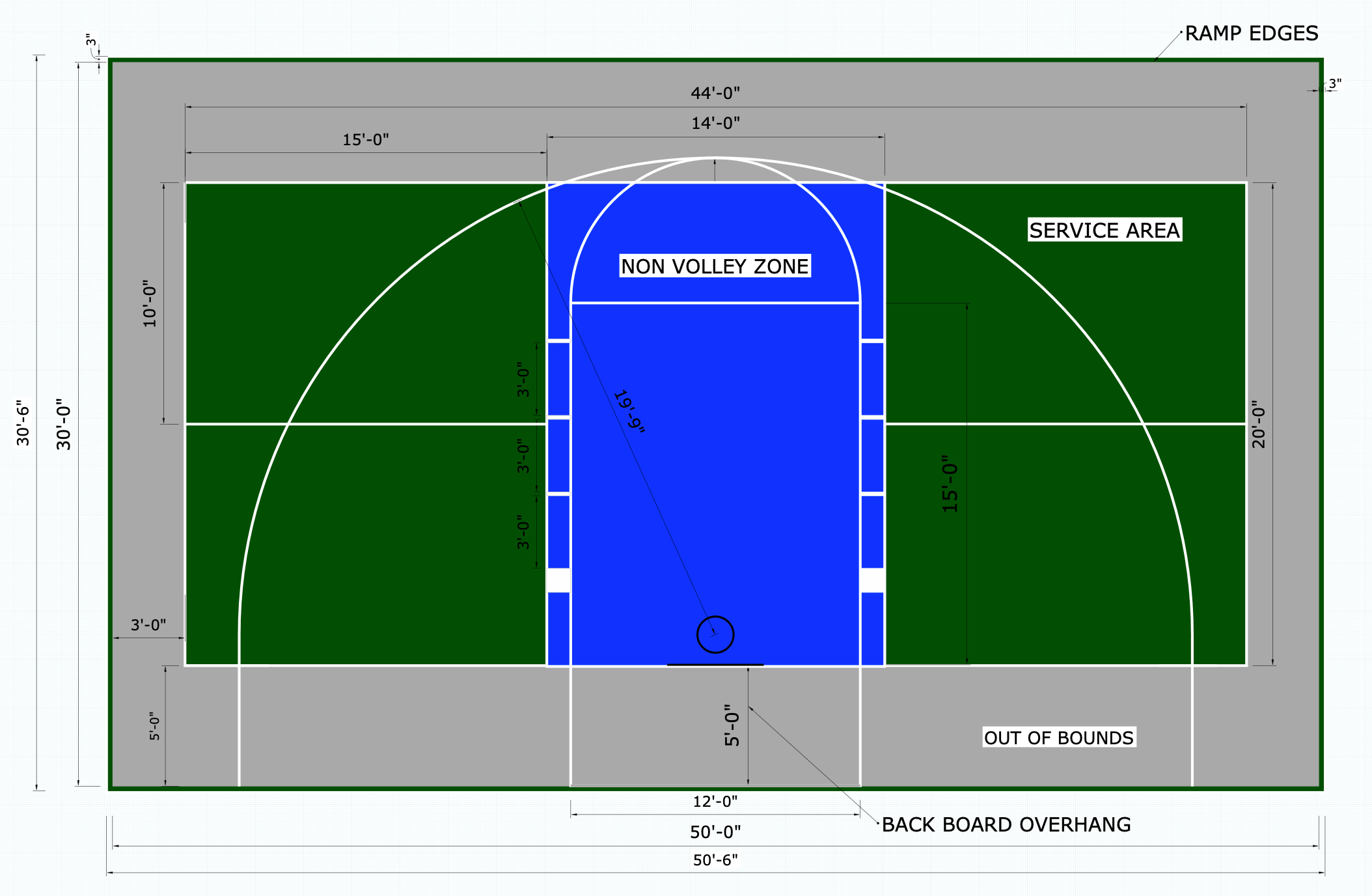Just How Illinois and Midwest are Blazing A Trail in Pickleball Courts Design & Building And Construction
Just How Illinois and Midwest are Blazing A Trail in Pickleball Courts Design & Building And Construction
Blog Article
Trick Consider the Construction of Pickleball Judiciaries: From Site Choice to Final Surfaces
The construction of pickleball courts includes a range of important elements, starting with the selection of a proper site that balances access with environmental factors to consider. Important components such as court dimensions, surface products, and drainage systems considerably influence not only the high quality of play yet also the durability of the center. Attention to illumination and ending up touches can boost the overall experience for players and spectators alike. Recognizing exactly how each of these parts interrelates may reveal insights that are commonly overlooked, prompting a better assessment of ideal techniques in court construction.
Website Option Standards
When getting started on the building and construction of pickleball courts, it is vital to toenail down the website choice requirements that will ensure optimum playability and access. The area needs to be quickly reachable for gamers, preferably located near domestic areas or area facilities, to motivate participation.
Moreover, the surface must be level and stable, as irregular ground can cause safety hazards and influence gameplay. Appropriate drainage is additionally important; choosing a site with excellent water overflow will certainly assist maintain court conditions during unfavorable climate.
Another vital factor to consider is the accessibility of utilities. Accessibility to electrical power and water is necessary for illumination and maintenance objectives. Additionally, closeness to auto parking facilities is crucial, helping with very easy gain access to for gamers and spectators alike.
Ecological elements can not be forgotten; natural color from trees can enhance player convenience, while exposure to dominating winds might interrupt play. Last but not least, zoning policies and area support must be taken into consideration to guarantee that the task aligns with regional standards and gets the support it requires for successful application. By very carefully evaluating these criteria, stakeholders can produce a welcoming and useful setting for pickleball enthusiasts.
Court Dimensions and Design
To make sure ideal gameplay and adherence to regulations, the dimensions and design of pickleball courts need to be meticulously specified. A standard pickleball court measures 20 feet in width and 44 feet in length for both singles and doubles play. The suggested design includes a non-volley zone, frequently described as the "kitchen area," prolonging 7 feet from the internet on either side. This location is vital, as it affects gamer positioning and shot choice - Illinois and midwest.
The web elevation is set at 36 inches at the sidelines and 34 inches at the center, creating a slight dip that influences round trajectory. Court markings are similarly crucial; lines ought to be 2 inches wide and distinct in shade to make sure exposure.
Additionally, a buffer area surrounding the court is recommended, generally extending 5 to 10 feet past the sidelines and baselines to accommodate gamers' motions and enhance safety. Correct design and dimensions not just make sure compliance with main guidelines yet additionally improve the overall having fun experience, accommodating both entertainment and affordable play. Careful preparation in these areas is paramount to the successful construction of pickleball courts.
Surface Area Product Options
Picking the ideal surface product for pickleball courts is important for ensuring ideal player efficiency and safety. visit here The selection look at this web-site of surface can dramatically affect gameplay, consisting of ball bounce, grip, and player comfort.
There are numerous choices readily available, each with its unique features. Asphalt is a prominent selection due to its longevity and low upkeep needs. It offers a strong playing surface that can hold up against various climate condition but may call for periodic resurfacing.
Concrete is one more extensively used material, using superb longevity and a smooth surface. It permits for consistent ball bounce however can be tough on gamers' joints, making it less desirable for long-lasting play without correct padding.
For those seeking enhanced comfort and shock absorption, cushioned acrylic surface areas offer a viable alternative. These surfaces integrate a base layer with an acrylic overcoat, giving boosted grip and a softer feel, which is advantageous for minimizing the danger of injuries.
Lastly, artificial lawn is gaining traction, particularly for multi-purpose facilities. Its flexibility and lower maintenance needs make it an appealing choice, though it may not supply the exact same sphere reaction as standard difficult courts. Cautious consideration of these choices will guarantee an optimal playing environment.
Water Drainage and Lights Factors To Consider
Correct water drainage and efficient illumination are vital elements in the building of pickleball courts, considerably influencing both playability and safety. Ample water drainage systems stop water build-up, which can result in slippery surface areas and damage to the court structure. A properly designed water drainage plan incorporates sloped surface areas and proper materials to facilitate water move far from the playing area - Illinois and midwest. This not just protects the stability of the court but additionally reduces downtime due to inadequate climate condition.
Lighting is similarly essential, particularly for courts planned for evening use. Appropriate lighting improves visibility, making sure that gamers can see the sphere plainly and lowering the risk of crashes. The placement of lighting fixtures must be purposefully planned to get rid of shadows and give even circulation of light across the court. LED lights are recommended for their energy effectiveness and long life, supplying bright illumination while minimizing functional prices.

Last Coatings and Upkeep
After addressing water drainage and illumination considerations, attention transforms to the final finishes and recurring maintenance of pickleball courts. Common alternatives include acrylic coverings and specialized sporting activities surface areas that offer optimum grip and cushioning.

Seasonal maintenance could consist of resurfacing every few years, depending upon use and environmental aspects. Effectively maintaining internet, court lines, and bordering locations is equally crucial to give a safe and pleasurable having fun experience. By purchasing quality finishes and adhering to an organized upkeep timetable, center proprietors can ensure their pickleball courts remain in exceptional problem for many years ahead.
Conclusion
In conclusion, the effective building and construction of pickleball courts hinges on meticulous focus to address a number of essential factors. Top quality surfaces and a robust upkeep schedule are essential for maintaining the court's condition, boosting the general experience for players and spectators alike.
Report this page